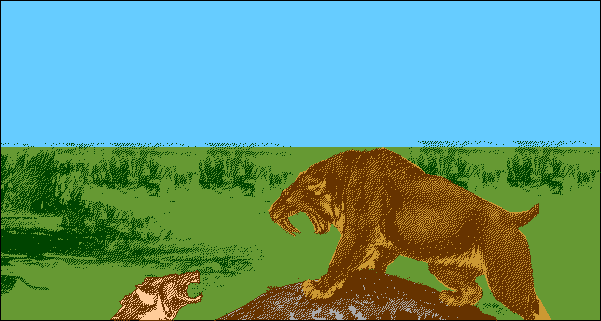
Exercise 4-1
The Ice Age - A Pleistocene Bestiary
George H. Michaels and Brian M. Fagan

Common Name: Buffalo
Scientific Name: Bison bison
Related to: No Other Living Species
Current Status: Previously endangered, but now recovering.
Distribution: Found throughout the Great Plains and Midwest of North America. Common from the Late Pleistocene until the Nineteenth Century. The species fell prey to heavy hunting by Europeans, and would now be extinct except for early conservation and breeding efforts. Still only found in national parks and state and private game preserves.
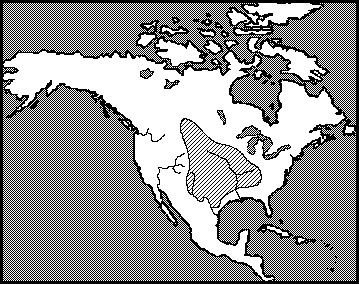
Distribution of Buffalo (Bison bison ) in North America During the Wurm/Weichsel/Wisconsin Fullglacial
This is the Sole Distribution of the North American Buffalo.
Common Name: European Bison or Wisent
Scientific Name: Bison bonasus
Related to: No Other Living Species
Current Status: Endangered.
Distribution: Originally found throughout the Northern and Central European steppes. This species is now only found in the Bialowice Forest of the Polish-Soviet Russian borderland.
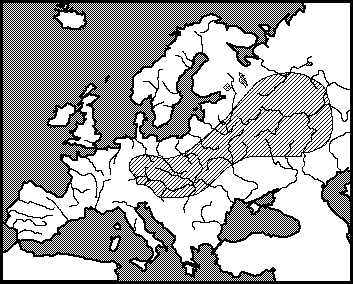
Distribution of European Wisent (Bison bonasus ) in Eurasia During the Wurm/Weichsel/Wisconsin Fullglacial
This is the Sole Distribution of the European Wisent.
Common Name: Steppe Wisent
Scientific Name: Bison priscus
Related to: Both European and American bison.
Current Status: Extinct.
Distribution: Originally found throughout the Northern and Central European steppes. Migration across Berengia and into North America eventually lead to the evolution of Bison bison. Species apparently became extinct during the Late Pleistocene, being replaced in North America by B. bison , and in Europe by B. bonasus.
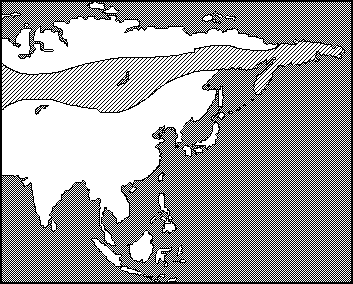
Distribution of Steppe Wisent (Bison priscus ) in Asia During the Wurm/Weichsel/Wisconsin Fullglacial
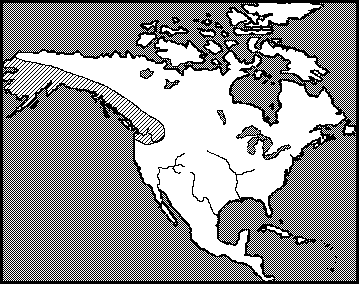
Distribution of Steppe Wisent (Bison priscus ) in North America During the Wurm/Weichsel/Wisconsin Fullglacial
Common Name: Cave Bear
Scientific Name: Ursus spelaeus
Related to: Brown Bear (U. arctos )
Current Status: Extinct
Distribution: Common throughout eastern and western Europe during the last major glacial stage. Species experienced a period of rapid decline and eventual extinction during the last phase of the last glacial maximum.
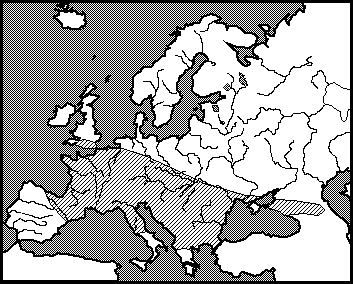
Distribution of Cave Bears (Ursus spelea ) During the Wurm/Weichsel/Wisconsin Fullglacial
This is the Sole Distribution of Cave Bears.
Common Name: Cave Lion
Scientific Name: Panthera leo spelea (probably related to P. leo atrox in North America during the Late Pleistocene)
Related to: Indian Lion (P. leo persica)
Current Status: Extinct
Distribution: Common throughout Europe and northern Asia (and probably parts of North America in the species P. leo atrox) during the last major glacial stage. Species experienced a period of rapid decline and eventual extinction during the last phase of the last glacial maximum.
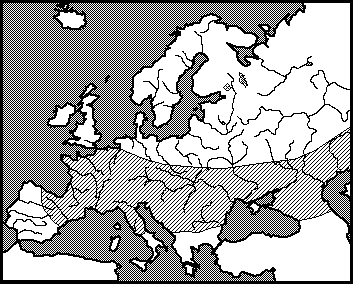
Distribution of Cave Lions (Panthera leo spelea ) in Eurasia During the Wurm/Weichsel/Wisconsin Fullglacial
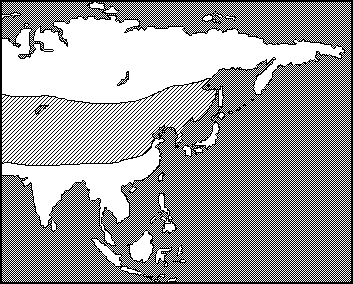
Distribution of Cave Lions (Panthera leo spelea ) in Asia During the Wurm/Weichsel/Wisconsin Fullglacial
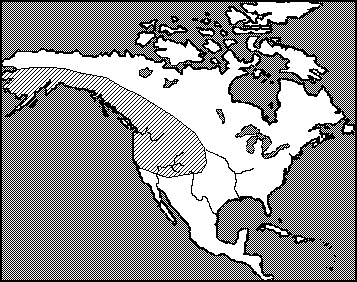
Distribution of Cave Lions (Panthera leo atrox ) in North America During the Wurm/Weichsel/Wisconsin Fullglacial
Common Name: Bush-Antlered Deer
Scientific Name: Eucladoceros sp.
Related to: No Other Living Species
Current Status: Extinct.
Distribution: Found throughout Eurasia during the early part of the Late Pleistocene. No known living close relatives.

Distribution of Bush-Antlered Deer (Eucladoceros sp.) in Eurasia During the Wurm/Weichsel/Wisconsin Fullglacial
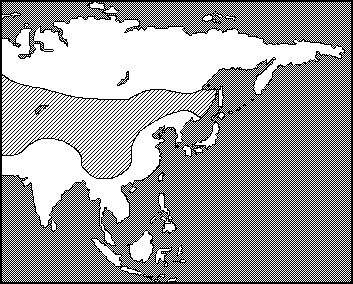
Distribution of Bush-Antlered Deer (Eucladoceros sp.) in Asia During the Wurm/Weichsel/Wisconsin Fullglacial
Common Name: Giant Cheetah
Scientific Name: Acinonyx pardinensis
Related to: modern cheetah (A. jubatus)
Current Status: Extinct
Distribution: Found in Europe, Africa, and southern Asia during the last major glacial stage. There were closely related species in North America during the same time period. Old World descendants, found only in Africa and southern Asia, are currently facing extinction.
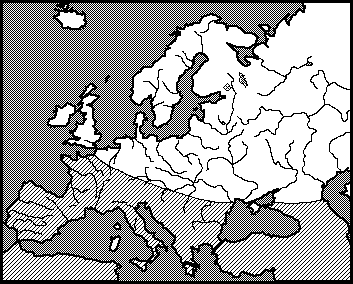
Distribution of Giant Cheetahs (Acinonyx pardinensis ) in Eurasia During the Wurm/Weichsel/Wisconsin Fullglacial
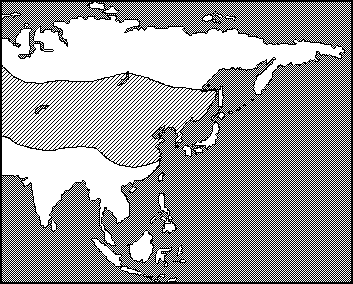
Distribution of Giant Cheetahs (Acinonyx pardinensis ) in Asia During the Wurm/Weichsel/Wisconsin Fullglacial
Common Name: Giant Armadillo
Scientific Name: Gylptodon sp.
Related to: Very distantly related to the much smaller armadillo common throughout South and Central America, and Texas.
Current Status: Extinct.
Distribution: Glyptodonts proper were found throughout South America from the Tertiary period through the Pleistocene. A close relative, the Glyptotherium, was found in Central America and southern North America during the Late Pleistocene. Both became extinct at the close of the Late Pleistocene.
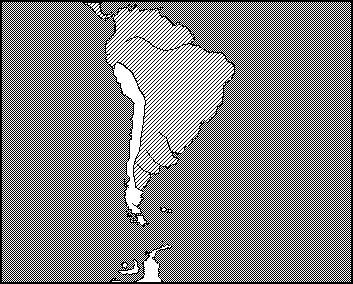
Distribution of Giant Armadillo (Gylptodon sp.) in South America During the Wurm/Weichsel/Wisconsin Fullglacial
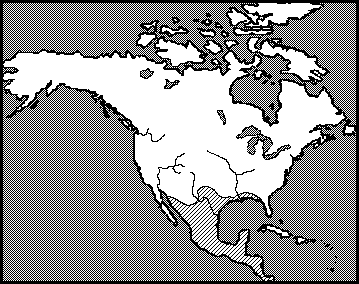
Distribution of Giant Armadillo (Gylptodon sp.) in North America During the Wurm/Weichsel/Wisconsin Fullglacial
Common Name: Wooley mammoth
Scientific Name: Mammuthus primigenius
Related to: No modern relatives. Last shared a common ancestor with modern elephants (Primelephas gomphotheriodes ) about 5 millions years ago.
Current Status: Extinct
Distribution: Common in Europe, northern Asia and much of North America during the last major glacial stage. Species experienced rapid decline and eventual extinction during the last phase of the last glacial maximum in all parts of the world.
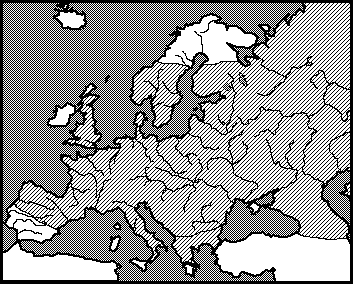
Distribution of Wooley Mammoths (Mammuthus primigenius ) in Eurasia During the Wurm/Weichsel/Wisconsin Fullglacial
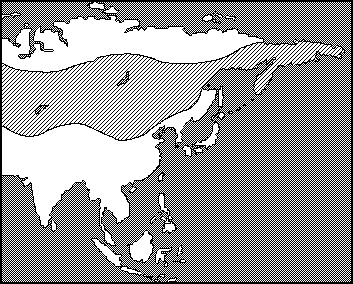
Distribution of Wooley Mammoths (Mammuthus primigenius ) in Asia During the Wurm/Weichsel/Wisconsin Fullglacial
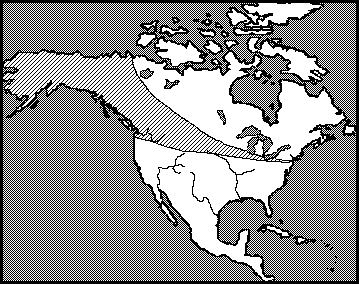
Distribution of Wooley Mammoths (Mammuthus primigenius ) in North America During the Wurm/Weichsel/Wisconsin Fullglacial
Common Name: Mastodon
Scientific Name: Mastodon americanus
Related to: No modern relatives. Last shared a common ancestor with modern elephants and mastodons sometime before 10 millions years ago.
Current Status: Extinct
Distribution: Found primarily in North and South America during the last major glacial stage. Family experienced rapid decline and eventual extinction during the end of the Pleistocene in all parts of the world.
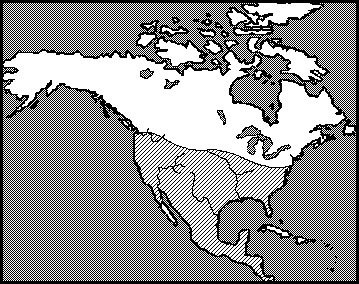
Distribution of Mastodons (Mastodon americanus ) in North America During the Wurm/Weichsel/Wisconsin Fullglacial
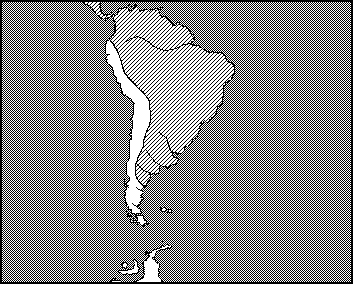
Distribution of Mastodons (Mastodon americanus ) in South America During the Wurm/Weichsel/Wisconsin Fullglacial
Common Name: Giant Ground Sloth
Scientific Name: Megatherium americanum
Related to: No Modern Species.
Current Status: Extinct.
Distribution: M. americanum was common throughout South America during the Pliocene and Pleistocene. With a length of up to 5-6 meters, they were larger and more heavily built han modern elephants! A closely related genus (Eremotherium ) occurred in North America during the Pleistocene, but appears to have been largely restricted to the area that is now Florida.
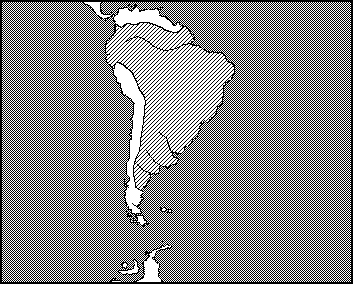
Distribution of Giant Ground Sloth (Megatherium americanum ) in South America During the Wurm/Weichsel/Wisconsin Fullglacial
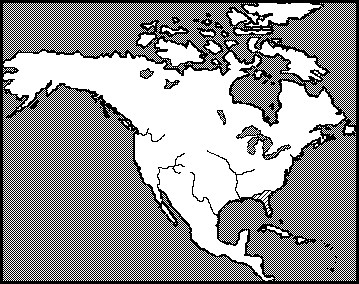
Distribution of Giant Ground Sloth (Eremotherium sp.) in North America During the Wurm/Weichsel/Wisconsin Fullglacial
Common Name: Short-Faced Hyena
Scientific Name: Pachycrocuta brevirostris
Related to: Very distantly related to spotted hyenas found in Africa today.
Current Status: Extinct.
Distribution: The short-faced hyena was a common form of hunting hyena found in Eurasia during the Early-middle Pleistocene. Distantly related to Chasmaporthetes ossifragus (the hunting hyena), the only hyena species to have migrated into North America. Both species became extinct slightly before the Late Pleistocene.
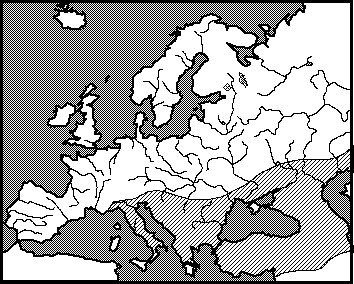
Distribution of Short-faced Hyena (Pachycrocuta brevirostris ) in Eurasia During the Riss-Wurm/Eem/Sangamon Interglacial
This is the Sole Distribution of the Short-faced Hyena.
Common Name: Sabre-Toothed Tiger
Scientific Name: Smilodon populator (related to S. fatalis in North America during the Late Pleistocene)
Related to: No living species
Current Status: Extinct
Distribution: Common throughout South America, with related sub-species throughout North America during the last major glacial stage. The genus Smilodon is part of the same family as the genus Megantereon - the dirk-toothed cats of Europe, Asia, and Africa from the same time period. Common throughout the Pleistocene, but became extinct after last full-glacial.
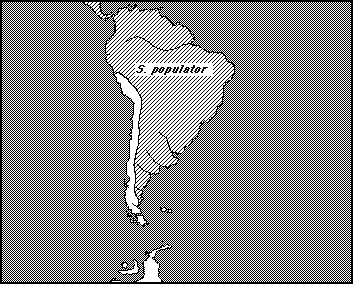
Distribution of Sabre-Toothed Tigers (Smilodontini ) in South America During the Wurm/Weichsel/Wisconsin Fullglacial
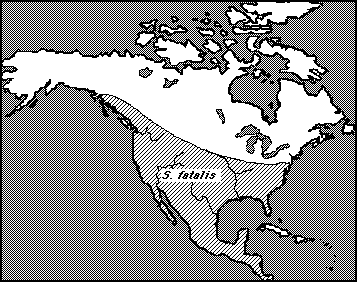
Distribution of Sabre-Toothed Tigers (Smilodontini ) in North America During the Wurm/Weichsel/Wisconsin Fullglacial
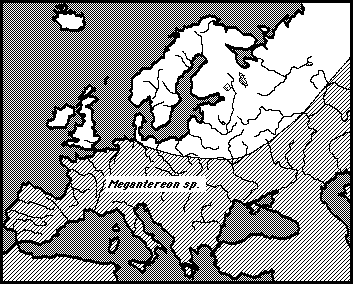
Distribution of Dirk-Toothed Cats (Smilodontini ) in Northern Eurasia During the Wurm/Weichsel/Wisconsin Fullglacial
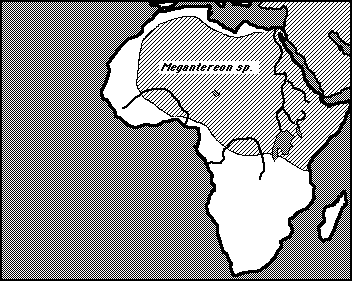
Distribution of Dirk-Toothed Cats (Smilodontini ) in Africa During the Wurm/Weichsel/Wisconsin Fullglacial
Common Name: Wooley Rhinoceros
Scientific Name: Coelodonta antiquitatis
Related to: Distantly related to the rare Dicerorhinus sumatrensis, a Sumatran rhinoceros living today, but near extinction.
Current Status: Extinct.
Distribution: Common throughout northern Europe and Eastern Asia during the Late Pleistocene. Had identical ecological requirements as the wooley mammoth. The large frontal horn was probably for clearing heavy snow to find forage. Unlike the wooley mammoth, the wooley rhinoceros never migrated into North America
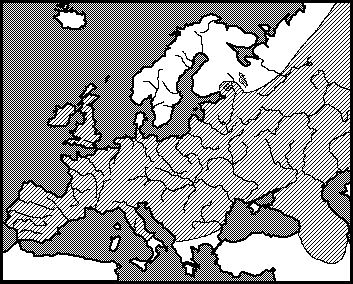
Distribution of Wooley Rhinoceros (Coelodonta antiquitatis ) in Eurasia During the Wurm/Weichsel/Wisconsin Fullglacial
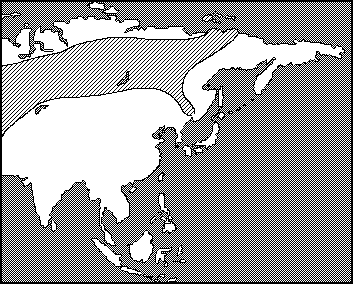
Distribution of Wooley Rhinoceros (Coelodonta antiquitatis ) in Asia During the Wurm/Weichsel/Wisconsin Fullglacial
| Previous | Next |